For loop with two variables Java
For loop with two variables Java
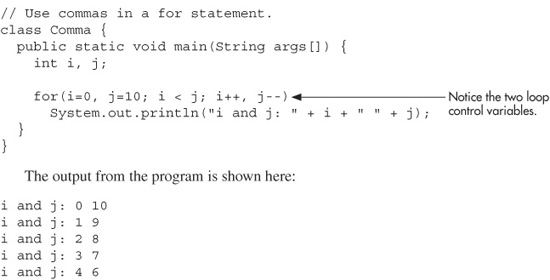
I'm happy to help! Here's a detailed explanation of using for loops with two variables in Java:
In Java, you can use for loops with multiple variables to iterate over arrays or collections of data. This is particularly useful when you want to process each pair (or triple) of elements from an array or list.
Let's start with the basics: a standard for loop with one variable looks like this:
for (int i = 0; i < arr.length; i++) {
System.out.println(arr[i]);
}
This code will print out each element in the arr array. But what if you want to access two elements at once? That's where a for loop with two variables comes in.
To declare and initialize two variables, you separate them with commas:
for (int i = 0, j = arr.length - 1; i < j; i++, j--) {
System.out.println("Pair: " + i + ", " + j);
}
In this example:
i starts at 0 and goes up to arr.length - 1. j starts at arr.length - 1 and goes down to 0. The condition is i < j, which means the loop will run as long as i is less than j. The increment/decrement statements are separated by commas. Here, we're incrementing i and decrementing j.
Now, let's talk about how you can use this for loop with two variables. For example, say you have an array of integers and you want to find all the pairs where one number is equal to twice another:
int[] arr = {1, 2, 3, 4, 5, 6};
for (int i = 0, j = arr.length - 1; i < j; i++, j--) {
if (arr[i] * 2 == arr[j]) {
System.out.println("Pair found: " + arr[i] + ", " + arr[j]);
}
}
In this case, the for loop will iterate over each pair of elements in the arr array and check if one element is equal to twice another. When it finds a match, it prints out the pair.
Two-variable for loops can also be used with other types of collections, like lists or sets. Just make sure you adjust the initialization, condition, and increment/decrement statements accordingly.
Here are some key takeaways:
To declare and initialize two variables in a for loop, separate them with commas. Use the for loop to iterate over each pair (or triple) of elements from an array or collection. The condition can be based on the relationship between the two variables. You can use the increment/decrement statements to adjust the values of both variables simultaneously.I hope this helps you understand for loops with two variables in Java!
Java for loop with two iterators
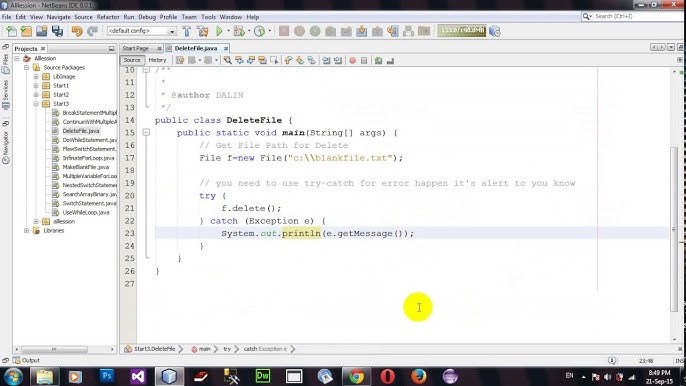
Here's an explanation of how to use a for loop with two iterators in Java:
In Java, you can't directly create a for loop that iterates over two different collections or arrays simultaneously using the standard for-each loop syntax. However, there are ways to achieve this.
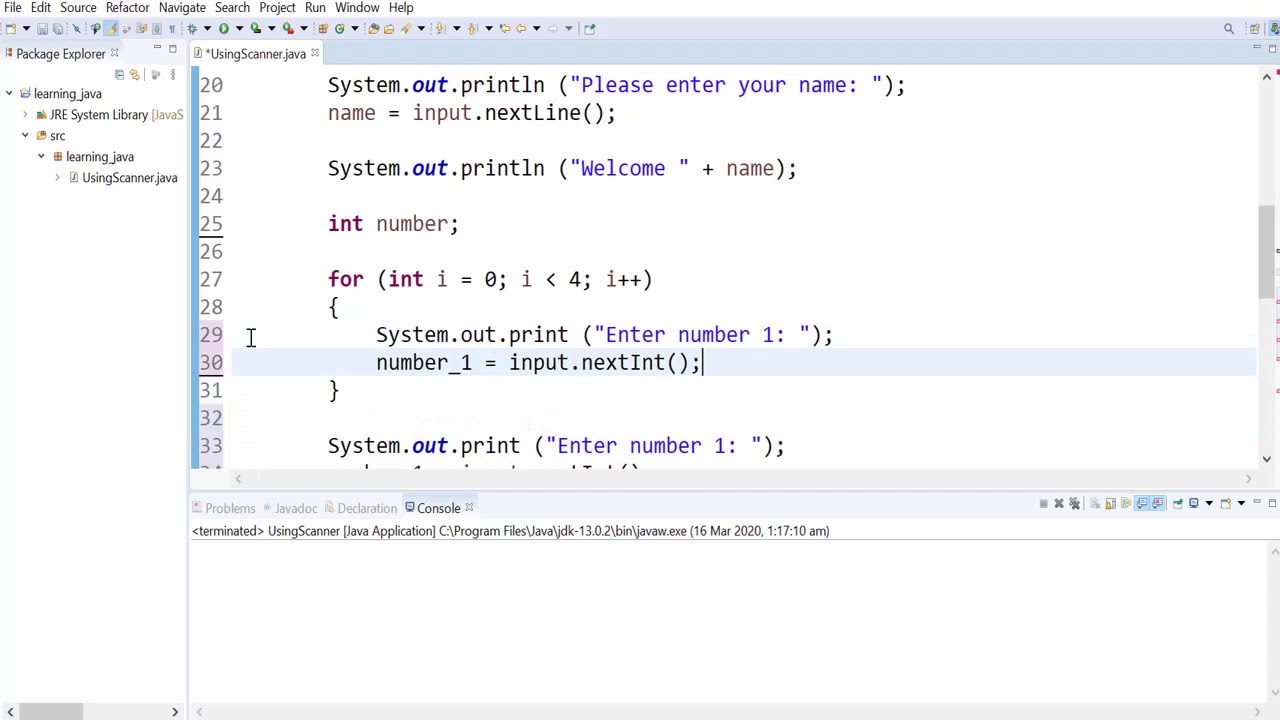
One approach is to use two nested for loops. This is straightforward but it doesn't look very elegant and might be inefficient if your collections are large.
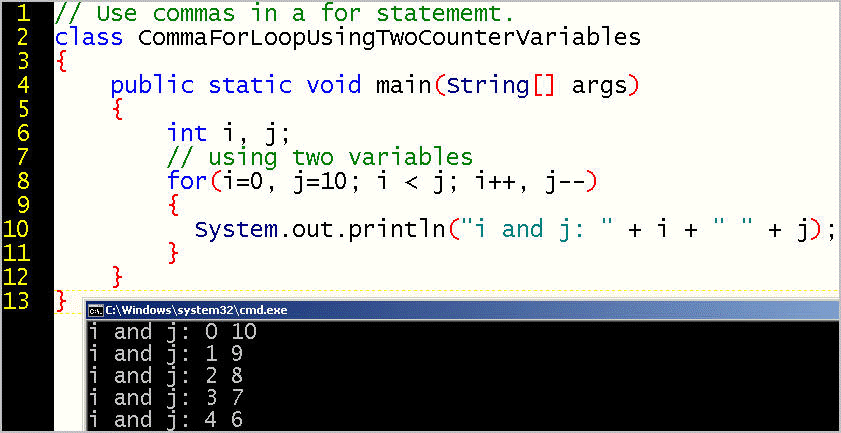
Another way to do it is by using a custom iterator class that iterates over both collections. Here's an example of how you can implement such an iterator:
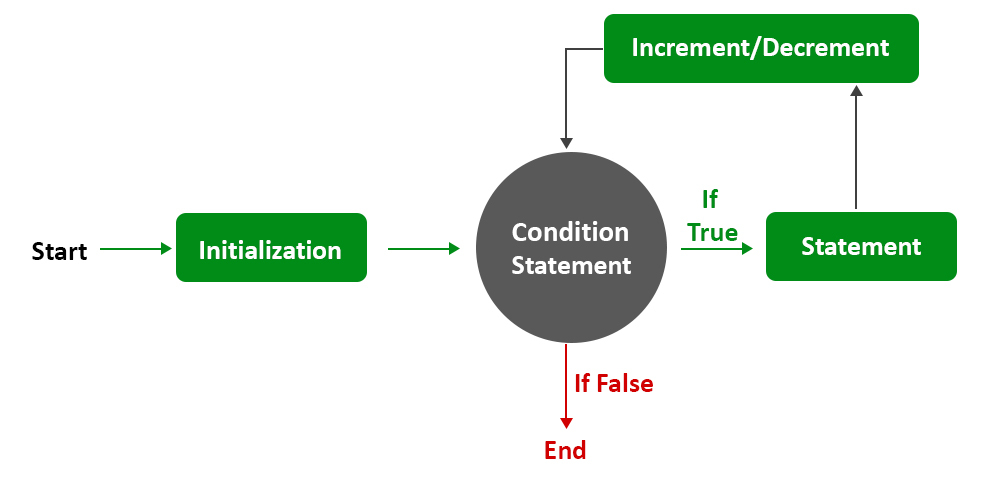
import java.util.Iterator;
import java.util.NoSuchElementException;
class DoubleIterator implements Iterator {
private final Iterator i1;
private final Iterator i2;
public DoubleIterator(Iterator i1, Iterator i2) {
this.i1 = i1;
this.i2 = i2;
}
@Override
public boolean hasNext() {
return i1.hasNext() || i2.hasNext();
}
@Override
public Integer next() throws NoSuchElementException {
if (!i1.hasNext()) {
return i2.next();
} else if (!i2.hasNext()) {
return i1.next();
} else {
int v1 = i1.next(), v2 = i2.next();
while (v1 < v2) {
v1 = i1.next();
}
return v1;
}
}
@Override
public void remove() throws UnsupportedOperationException {
throw new UnsupportedOperationException("Not supported");
}
}
To use this iterator, you would create an instance of the DoubleIterator class and pass in your two iterators. Then you could use a for-each loop to iterate over this new iterator.
Here is how you can do it:
import java.util.ArrayList;
import java.util.Arrays;
import java.util.Iterator;
import java.util.List;
public class Main {
public static void main(String[] args) {
List list1 = Arrays.asList(0, 1, 2);
List list2 = Arrays.asList(3, 4);
Iterator iterator1 = list1.iterator();
Iterator iterator2 = list2.iterator();
for (Integer integer : new DoubleIterator(iterator1, iterator2)) {
System.out.println(integer);
}
}
}
In this example, we create two lists of integers. Then we create iterators over these lists and pass them to the DoubleIterator constructor. Finally, we use a for-each loop to iterate over this new iterator and print out all the elements from both lists in order.
However, if you just want to iterate over two arrays simultaneously, it might be more elegant (and efficient) to use nested loops or a single loop with two indices as shown below:
public class Main {
public static void main(String[] args) {
Integer[] array1 = {0, 1, 2};
Integer[] array2 = {3, 4};
for (int i = 0; i < array1.length || i < array2.length; i++) {
if (i < array1.length) System.out.println("Array 1: " + array1[i]);
if (i < array2.length) System.out.println("Array 2: " + array2[i]);
}
}
}
This will print out all elements from both arrays in order, but it doesn't look very elegant and is not a good approach to iterate over different types of collections.





























